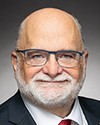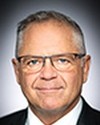Good afternoon, vice-chairs and members of the standing committee.
I am Darren Ho, a gay may from the unceded Coast Salish territories of the Musqueam, Tsleil-Waututh, and Squamish peoples, also known as Vancouver. I founded an organization called Our City of Colours, an initiative that aimed to increase the visibility of LGBTQ people from under-represented and underserved cultural and linguistic communities.
Like Brook, I currently work for the Community-Based Research Centre, or CBRC, the executive director of which, Jody Jollimore, you heard from a couple of sessions ago. CBRC uses research and intervention development to promote the health of queer men.
In my statement, I will be using the acronym QPOC to refer to queer people of colour, a group I identify as being a part of, being both gay and of Chinese-Asian descent. I use “queer” as an umbrella term to refer to those of us who are sexual and gender minorities, including gay, lesbian, bisexual and trans people.
The importance of intersectionality has been brought up in some previous sessions, but I want to reiterate that viewing health and shaping policies through an intersectional lens is very important for QPOC communities. Oftentimes in racialized communities, our queerness is erased, and in queer communities, our racialized identities are not welcomed.
It's a common experience amongst my peers that we have to hide our sexuality in our cultural communities—for me specifically, the Chinese community. Meanwhile, in queer communities, we face microagressions, discrimination and racism. Understanding intersectionality is crucial when serving queer people of colour.
I want to tell a story about me in the mid-2000s. Imagine me at 18 years old, which I like to think is still how I look now. I was 18 years old, growing up in Coquitlam, B.C. I had just had my first sexual experience with another guy. I went to my family doctor a couple of days afterwards because I was really worried. I hadn't learned anything yet about testing window periods, so I thought I had to be tested for STIs right away. I told my doctor that I had had sex with a guy. To this day, I remember his response, which was to ask two questions: one, had I used a condom, and two, whether my parents knew.
Both questions he asked me were very accusatory and judgmental. My parents did not know that I was gay, and I was worried that even with policies around doctor-patient confidentiality, he would accidentally or intentionally out me to my parents, because he was the doctor for everyone in my family. I felt anxious and worried that all of this would get back to my parents. That was the last time I visited my family doctor.
My point is that this one interaction is all it took to turn me off of seeing a family doctor for over 10 years. This happened when I was 18, and I'm now 30 years old. I only got a family doctor a few months ago.
I also tell the story being conscious of the statistic that if we as gay men are not out to our doctor, we are 10 times less likely to be tested for HIV. Recent studies have looked at how many queer men of colour are out to their primary care providers, with estimates ranging from as high as about 70% to as low as about 24% in some queer men of colour communities.
Regardless of what this number is, the reality is that many members of the QPOC community face a number of barriers in being open about their sexuality. Homosexuality is still very stigmatized in many of our communities. As young gay men, we are often told a narrative that once we come out to others about our sexuality, a world of opportunity to live openly and happily will be available to us. This is true, but not for all of us and not all of the time. It's not always better to come out. For many of us, coming out in our communities can bring feelings of acceptance, but it can also lead to feelings of anxiety, being rejected or even being forced back into the closet. When these realities feel more likely than the supposed promised world of opportunity, the decision to not come out feels compelling.
I'm not advocating that we shouldn't come out to folks like our health care professionals. I'm asking us to reconsider what we think about people who are not out to their families, friends or communities, and then to take that reconsideration to shaping better health care spaces. Confidential and anonymous sexual health options are crucial for the health of many in our community. However, just as important are health care providers who have the competency and training to create environments where LBGTQ patients can feel safe to disclose their sexuality when they feel like it.
My first recommendation is for the federal government to ensure that health care professionals receive comprehensive intersectional education and training to provide health care that accounts for the intricacies of patients from QPOC communities. Working, volunteering and navigating through gay men's health, I've learned that race is a social determinant of health, as is being a sexual minority. The conclusion is, of course, that those of us who are marginalized because we are a racial minority face further marginalization because of this intersection. Bill also just talked about this.
Earlier, you heard from Travis Salway, a post-doctoral research fellow from UBC's school of population and public health. Salway so eloquently explained that minority stress is the cumulative stress experienced due to our minority status. Minority stress is a factor that contributes to health disparities experienced by sexual and gender minorities, and we also know that queer people of colour, being members of multiple minority groups, experience minority stress at higher levels and are more likely to face experiences of discrimination and stigmatization.
We also know through research that minority stress compounded by race-related factors increases vulnerability to mental health challenges and HIV risk. Mental wellness is a critical health care issue for queer men, particularly anxiety for south Asian, east Asian and southeast Asian men, as well as depression for African, Caribbean and black men. I recommend that the federal government invest in targeted intersectional health promotion programs for different communities of queer people of colour.
Closely intertwined with QPOC communities are communities of queer immigrants and newcomers. Accessing health care as a queer individual has its own barriers, and this is more difficult when English or French is not our first language. Many of us who are queer and from backgrounds of racial minorities know of the disconnect often found between our sexuality and our culture. Some of us may not even know how to say the word “gay” in our mother tongues, simply because this word doesn't exist, because our culture never taught it to us, or maybe because colonialism has erased those teachings.
Many leaders in QPOC communities are working hard to advocate against the notion that queerness is only a concept of the western world, against the notion that homosexuality and queer identities only exist in other people's cultures. However, these ideas are reinforced when we only see sexual health information and queer-positive messaging in English and French.
I would like to recommend that the federal government explore options to make health care accessible and available in more linguistic communities that represent our growing populations. Related to that, in consideration of queer newcomers, it is vital to see a greater effort of including queer resources in settlement support services. That would be a very tangible example of an intersectional program.
Another story I want to share comes from working in HIV prevention. In doing this work, I've learned that health promotion strategies work best when enacted by local communities and supported by the federal government.
Today, in 2019, it's becoming more known that the HIV prevention tool pre-exposure prophylaxis or PrEP is covered in most Canadian provinces. However, where this messaging got lost was that PrEP had actually been available free of cost to first nations and Inuit people since 2013. All first nations people living in B.C. receiving benefits through the First Nations Health Authority could access free PrEP, and Inuit people in B.C. and nationwide could access free PrEP through their non-insured health benefits.
We knew that PrEP was an effective HIV prevention tool as early as 2012. In the five years between 2013 and 2018, only 13 first nations people in B.C. were accessing this free drug—only 13. Once PrEP became available to the general population in B.C. over 3,000 people were prescribed PrEP in that one year. Again, in the five years that PrEP was available in B.C. to first nations and Inuit people, we only got 13 people on PrEP. Please consider the number of first nations and Inuit people who contracted HIV during this time because of a lack of awareness of this drug. Somewhere along the way, health promotion messaging on this important prevention tool got lost for a very large community in Canada.
So that missed opportunities like this do not happen again, I recommend that when shaping health policies, programs and research, the federal government ensure equity across ethnocultural and indigenous communities.
Finally, since QPOC face barriers to being visible, I often get asked the question, “How many queer people of colour are there in x geographical population, according to research?” and then, by extension, “How many immigrants and newcomers identify as LGBTQ2S?”
I do not have those numbers with me today, but even if I did, I would like to remind us that QPOC and indigenous people have historically been under-represented in research. Engaging people of colour in research has often been cited as a limitation to research studies, and this difficulty of engagement stems from the history of research as a colonial tool, as well as the lack of accessibility and representation of people of colour in research conducting research. This is why I want to recommend that the federal government explore innovative research tools, leverage existing research tools and work collaboratively with communities to gain more data beyond quantitative data on QPOC and indigenous peoples.
Thank you for your time. It was a privilege and an honour to speak to this committee.



